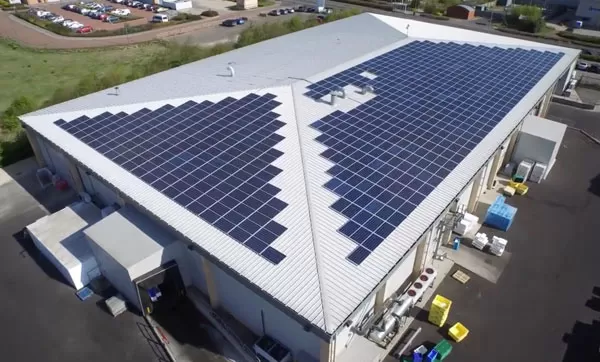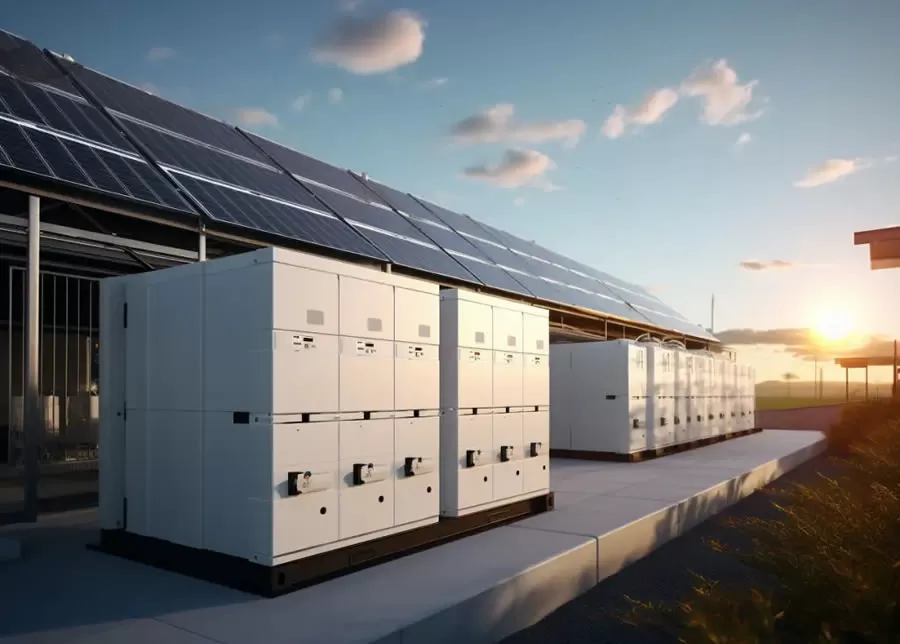
With the growing demand for green buildings and sustainable energy, building-integrated photovoltaics (BIPV) is gradually becoming a popular choice in the market as an innovative energy solution.BIPV systems combine photovoltaic power generation with the building structure to provide clean energy while enhancing the aesthetics of the building.
However, when investing in BIPV, many companies tend to focus only on the initial installation cost, but ignore the hidden costs that may exist in the whole life cycle.Brice Solar explains the hidden costs and revenue optimization strategies of BIPV in depth from a technical perspective, combined with industry cases, including material replacement cost, maintenance cost, energy yield, etc.
1. Initial investment and installation cost of PV project
The initial investment of BIPV system is usually higher than traditional PV system. Since BIPV technology is integrated into the building structure, the installation process and materials involved are usually more complex than conventional rooftop PV systems. Especially in new buildings or renovation projects, the design, customization and construction process of BIPV requires higher technical requirements, which increases the initial cost.
2. PV material replacement cost
BIPV is not only a power generation device, but also a part of the building structure, and its material replacement cost is often underestimated. Over time, some materials of the BIPV system may deteriorate or wear out, resulting in the need for replacement and repair. While BIPV panels typically have a long service life (approximately 25 to 30 years), certain components (e.g., PV cells, PV inverters) may need to be replaced periodically over the life of the system, increasing the total cost over time.
Lifetime mismatch between PV modules and building materials
For example, traditional building materials such as glass curtain walls and roof tiles can have a lifespan of more than 30 years, while BIPV modules may experience efficiency degradation or physical damage after long-term operation and need to be replaced in advance. For example, a commercial complex project had to spend an additional 15% of its budget on partial replacement due to a decline in light transmission caused by aging modules.
Compatibility Upgrade Costs
New-generation high-efficiency modules (e.g., Calcium Titanium Ore Stacked Cells) may face structural compatibility modification if they need to replace the old system, involving additional expenditures such as bracket adjustment and circuit matching.
Recycling and Disposal Costs
PV panels contain lead, cadmium and other substances, and the EU has put forward mandatory requirements for BIPV recycling. Taking a project in Germany as an example, the cost of harmless treatment of waste components accounts for 3%-5% of the total investment.

3、Maintenance cost
The maintenance cost of BIPV system is relatively low, but it is still a long-term expense that needs to be considered. Compared to traditional PV systems, maintenance of BIPV systems involves inspection of the building structure as well as regular cleaning and performance monitoring of the PV modules.
Cleaning and wear and tear
BIPV curtain walls of high-rise buildings need to be cleaned by professional overhead equipment, and the single cost can be up to two times that of ordinary rooftop PV; if long-term accumulation of dust leads to a 10% drop in power generation, the cumulative loss in 5 years may exceed 10,000 yuan.
Fault Detection Complexity
Concealed installation leads to difficulties in locating faults, and a hotel project once spent 2 weeks on troubleshooting a line fault, resulting in an indirect loss equivalent to 3 months of power generation revenue.
Building Structure Linkage Maintenance
Replacing BIPV modules may lead to repairing the waterproofing layer and thermal insulation layer. A case study of an office building in Shanghai shows that this kind of linkage work accounts for 40% of the total maintenance cost.
Monitoring and optimization
Many BIPV systems are equipped with monitoring systems to track power output, performance, and potential failures in real time. While such monitoring systems help to identify problems in a timely manner, installing and operating them also requires additional capital investment.
4. Fluctuating Energy Returns
The energy yield of a BIPV system depends not only on the amount of PV power generated, but is also affected by factors such as weather, seasonal variations, and the orientation of the building. Although BIPV can effectively reduce a building's energy consumption, the high initial investment costs may not be fully offset due to fluctuations in power generation.
Building orientation and shading
A residential project's building shading resulted in a 1.5-hour reduction in the average daily power generation hours of some modules, shrinking annual revenue by 18%.
Grid Rehabilitation Costs
The cost of upgrading transformers, cables, and other facilities in older buildings with insufficient grid capacity may account for 8-12% of the total project investment.
Electricity price policy risk
The internal rate of return (IRR) for BIPV projects in certain industrial parks has dropped from 9.2% to 6.5% after the PV subsidies were rolled back in some regions.
Energy price volatility
Future fluctuations in energy prices are also an important factor in the economics of BIPV systems. If conventional electricity prices increase, the benefits of BIPV systems will increase accordingly. However, if electricity prices remain low for a long period of time, the payback period of the BIPV system may be extended.
5. Insurance costs
The insurance cost of the BIPV system as part of the building may increase. Particularly in areas of extreme weather (e.g. strong winds, blizzards, etc.) or natural disasters, BIPV systems may require additional coverage to ensure their reliability under unfavorable conditions. The increase in insurance costs is also a hidden cost in the life cycle of a BIPV system.
6. How to resolve hidden costs?
Despite the high initial cost of a BIPV system, in some cases BIPV can bring value-added benefits to a building. Its aesthetics and green building attributes may make the building's market value higher, especially in environmentally conscious markets where BIPV buildings are more likely to attract potential buyers or tenants. In addition, some regional governments may offer tax incentives or subsidies to further reduce the overall investment cost of BIPV systems.
Pre-built technical redundancy at the design stage
With a modular BIPV system, reference can be made to the Tesla Solar Roof's individually replaceable tiles, with 5% power redundancy space reserved, which can reduce replacement costs at a later stage.
Full life cycle intelligent management
Access to AI operation and maintenance platforms (e.g. Huawei FusionSolar), which reduces manual inspection costs through power generation prediction and self-diagnosis of faults.
Revenue Model Innovation
Combined with the energy storage system and the difference between peak and valley electricity prices, a commercial complex has increased its IRR to 11.3% through the “self-generation and self-consumption+dynamic power sales” model.

Conclusion
As a sustainable energy solution for future buildings, BIPV systems bring many advantages, but they do have some hidden costs during their life cycle. Factors such as material replacement costs, maintenance costs, fluctuating energy returns, and insurance costs can all affect the long-term economics of a BIPV system. The essence of investing in BIPV is to “exchange short-term costs for long-term benefits”. By choosing suppliers with mature technologies (e.g. LONGi, CITIC Bo), adopting LCC (Life Cycle Cost) assessment models, and paying attention to local subsidy policies, the hidden costs can be controlled to less than 15% of the total investment.
When making investment decisions, these long-term expenditures and potential benefits should be fully considered in addition to the initial installation costs. For those who are interested in investing in BIPV, a comprehensive understanding of these costs and adequate budget planning will help them better realize sustainable energy use and economic returns. If you have questions about the benefits of BIPV, contact us for a customized BIPV cost and benefit analysis report to learn about new options for adding value to your building.









One step to find us,we will respond within 24 hours.
More Contact Details
008613738639386
[email protected]